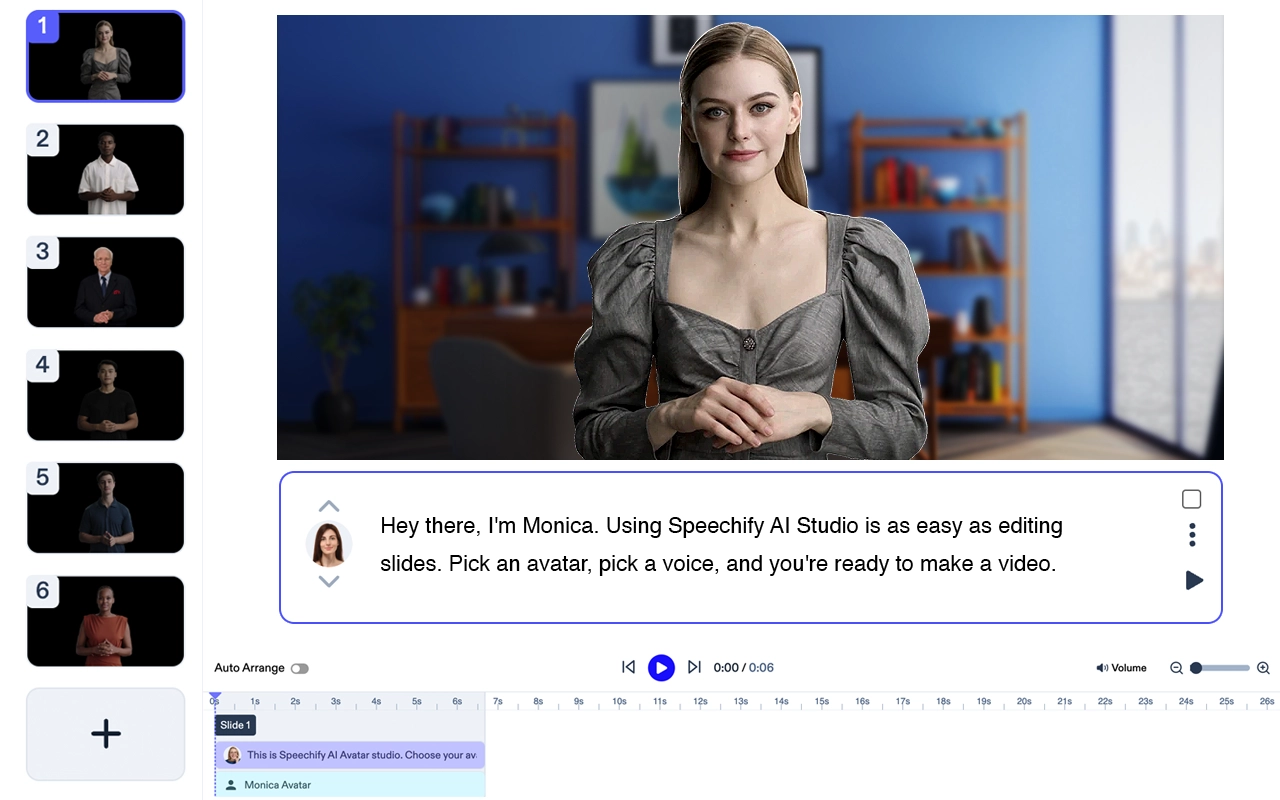
How to create a deepfake on TikTok
Looking for our Text to Speech Reader?
Featured In
AI is so sophisticated that you can deepfake just about anyone. If you want to have a try, this article takes you through how to create a deepfake on TikTok.
How to create a deepfake on TikTok
Social media is alight with deepfake content. AI-powered fake photos and videos are everywhere, and no public figure or talking point appears untouched. From deepfake pornography to videos showing Trump’s arrest for his New York indictment to Elon Musk fake videos going viral, deepfake has gone far beyond harmless Tiktok pranks.
Last year, CNN reported that a deepfake video of the Ukrainian president sought to manipulate the war. Synthetic media has also emerged as a critical tool for deepfake crypto scams.
But let’s stick to the lighter side of deepfake creation and outline the steps for creating deepfakes for TikTok.
The steps for creating deepfakes for TikTok
Before getting you started on manipulated media creation, let’s look at the basics of synthetic media technology.
In the deepfake creation process, the AI software feeds the original portrait through an encoder which then turns the photo into a latent face before a decoder produces a reconstructed deepfake face.
Artificial intelligence (AI) generates deepfake content using two competing algorithms. One is a generator, and the other is a discriminator. The generator creates the deepfake and tasks the discriminator to determine whether the content is real or artificial.
With this information in mind, let’s go through the creation of a deepfake TikTok video step by step. Don’t forget to check out many of the deepfake video-making tutorials on TikTok.
Step 1: Find the right deepfake software for the job
There are lots of AI deepfake software out there. The top-ranked synthetic media maker platforms include Deepswap, Deepfakes Web, Jiggy, the DeepFace Lab, and the Zao Deepfake app. You can download a deepfake app or create your deepfake TikTok video on your computer.
Within both AI environments, the software asks you to upload your image or video. On some platforms, you can add a video of your choice as the deepfake video backdrop, while many apps allow you to choose from a library of existing videos.
In any case, you can create just about any deepfake, from Joe Biden singing a lullaby to you speaking at the White House. Added to the visual capabilities, artificial intelligence voice generation scales the impact of deepfakes significantly.
Step 2: Take a picture of the face you want to use at an appropriate size
Your starting point is a portrait or video of the one person you want to star in your deepfake TikTok. It doesn’t have to be a professional photo—even a screenshot will work.
Step 3: Research and understand encoder-decoder pairs
It is important you understand the technology behind creating a deepfake photo or video. An autoencoder learns how to deconstruct and reconstruct a face using an encoder and a decoder.
The encoder takes two portraits and transforms them into a “latent face” and learns how the faces are constructed. The decoder then reconstructs the faces assimilating all the information it needs to repeat this process.
As a result, you can add a picture of your face to the encoder-decoder pair and transform it into a celebrity’s face because the pairs have learned how to deconstruct and reconstruct your portraits.
Step 4: Use a voice cloner for voiceovers
You may not want to use the original sound voice. Voice cloning software allows you to create videos of anyone speaking about any topic. The software only needs a voice sample to create video voiceovers, including singing, lecturing, and speeches.
Deepfake software adds whatever audio you choose to your deepfake video. Murf.ai, Beyondwords, and Respeecher are among the top voice cloning software options.
Step 5: Create your new video and upload it to TikTok
As soon as you have uploaded your original content and provided the specifics of the fake video you want to create, the deepfake software generates your deepfake TikTok. Depending on the complexity and length of your video, this can take a few seconds to several hours. When your video is ready, go into your TikTok account, upload your deepfake masterpiece, and wait for it to go viral.
Deepfake software providers charge different rates, so shop around.
Speechify—Text to speech software with natural-sounding voices

The text to speech platform Speechify doesn’t use voice cloning. Instead, its AI algorithms create voices that sound like authentic human voices. Speechify provides an array of functionalities in many different languages and is accessible via all device types.
You can also upload any document, and Speechify will deliver it as an audio file. Try out different-sounding voices to make listening even more pleasurable and convenient.
For tighter time management, speed up the rendition of your document. After Speechify delivers your copy in an audio version, you can download it and listen to it whenever you want.
Try Speechify’s natural-sounding voices for free today with text to speech, or check out the voice over generator for more customized voice generation.
FAQ
How can I generate deepfake images?
Anyone can generate deepfake images thanks to the available deepfake software and deepfake apps. You can use websites like Deepface Lab or Deepfake Web on your personal computer. On iPhones and Android devices, you can use popular deepfake apps like Wombo or Deepfake Studio. You can also choose from a vast selection of face-swapping apps.
Is deepfaking legal?
As of now, deepfaking is not illegal despite its often harmful impact. That said, it is against the law in most countries to use footage or photos without obtaining official permission. Furthermore, it is also illegal to use deepfakes for fraudulent activities.
How do you make a face effect on TikTok?
Inside TikTok, you can add different face effects. Start by finding “Effects” to the left of the recording button. Tap on an effect to try it out and choose your favorite. Press “Record” and start making your video.
What are the misinformation worries about deepfakes?
As deepfake technology grows more advanced, spreading disinformation is getting easier. Technology companies are trying to regulate the use of deepfakes to curb the spread of misinformation.
Microsoft has developed new technologies to allow for deepfake detection, while TikTok community guidelines now ban fake endorsements, commercial or political, and require labeling. A Google spokesperson told NBC News that people could request the removal of deepfake pages from their search engine.
How can I get to 1K likes on TikTok?
A smartly produced video can get you 1k likes without too much effort. However, there are specific steps you must take:
- Include your hook in the first 2-3 seconds
- Use the right hashtags to reach your audience
- Use to-the-point captions and engaging sounds
- Use special visual effects to enhance your videos
- Edit your video
- Follow the latest trends
- Use #fyp tags (for your page) to boost your content
What is ChatGPT?
ChatGPT is driven by AI technology and started as a chatbot capable of generating human-like conversations. Today, you can use it to write emails, reports, and blog posts.
Can I get a Tom Cruise deepfake?
You can try to emulate @deeptomcruise, the uber-successful Tom Cruise deepfake by Chris Ume that took the world by storm on TikTok. Use one of the apps, and within a few hours, you will have your very own Tom Cruise deepfake.

Cliff Weitzman
Cliff Weitzman is a dyslexia advocate and the CEO and founder of Speechify, the #1 text-to-speech app in the world, totaling over 100,000 5-star reviews and ranking first place in the App Store for the News & Magazines category. In 2017, Weitzman was named to the Forbes 30 under 30 list for his work making the internet more accessible to people with learning disabilities. Cliff Weitzman has been featured in EdSurge, Inc., PC Mag, Entrepreneur, Mashable, among other leading outlets.
 Previous
Previous